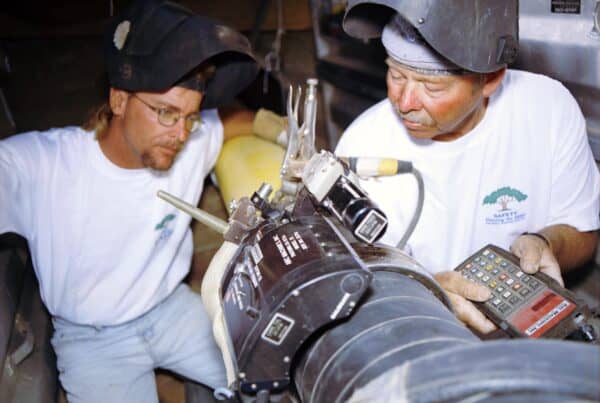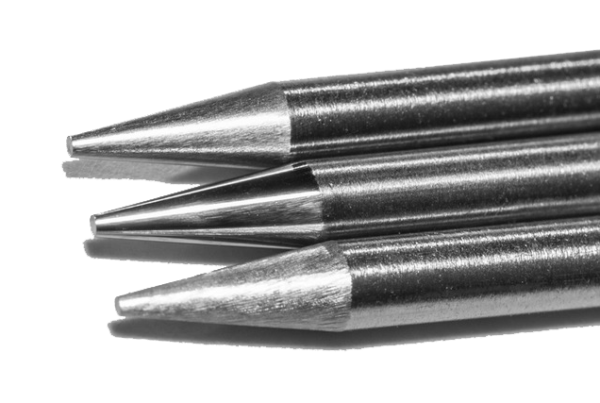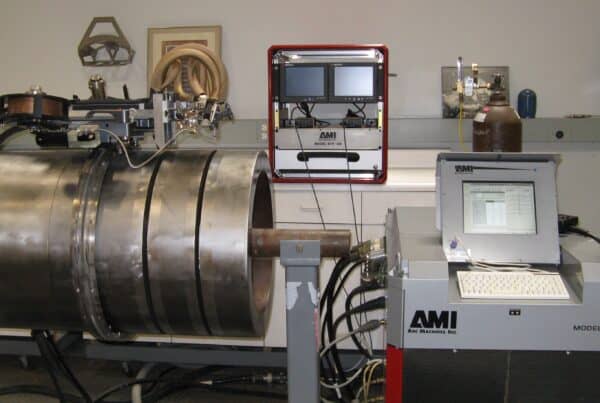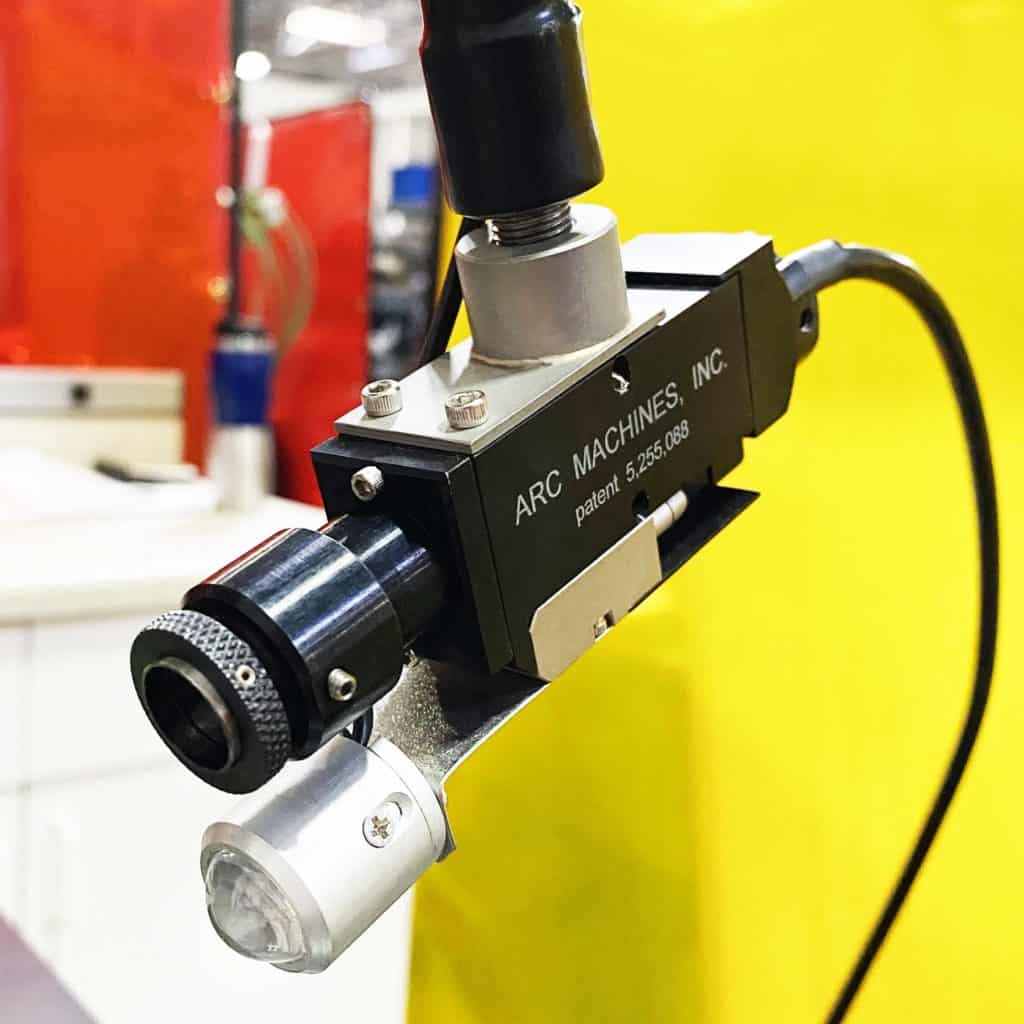
An arc welding monitoring system is an essential tool in any shop that has a significant volume of orbital welding projects. Just as the mechanization of orbital welding procedures has enabled welders to boost productivity, weld vision systems make it possible for welders to improve the quality, efficiency, and safety of automated welding procedures. Below, we highlight the capabilities and explain the key benefits of these systems.
What’s Involved in an Arc Welding Monitoring System?
An arc welding monitoring system uses one or more high-quality cameras to capture activity at the weld head and transmit it to a high-resolution video monitor. Cameras can be configured to focus on specific areas of the weld environment—leading, trailing, or both edges of the weld pool—giving the operator a detailed image of the interaction of electrode, arc, filler wire, and shielding gas.
Compared to face shields or helmets, a monitoring system provides a clearer, and in most cases, a magnified view to highlight specific details of the arc welding process. Monochrome images show crisp edges and sharp contrasts that reveal weld pool texture. A configurable system allows operators to focus cameras and filter images in order to optimally monitor weld quality as well as identify factors that contribute to defects.
Three Benefits of Using Arc Welding Monitoring Systems
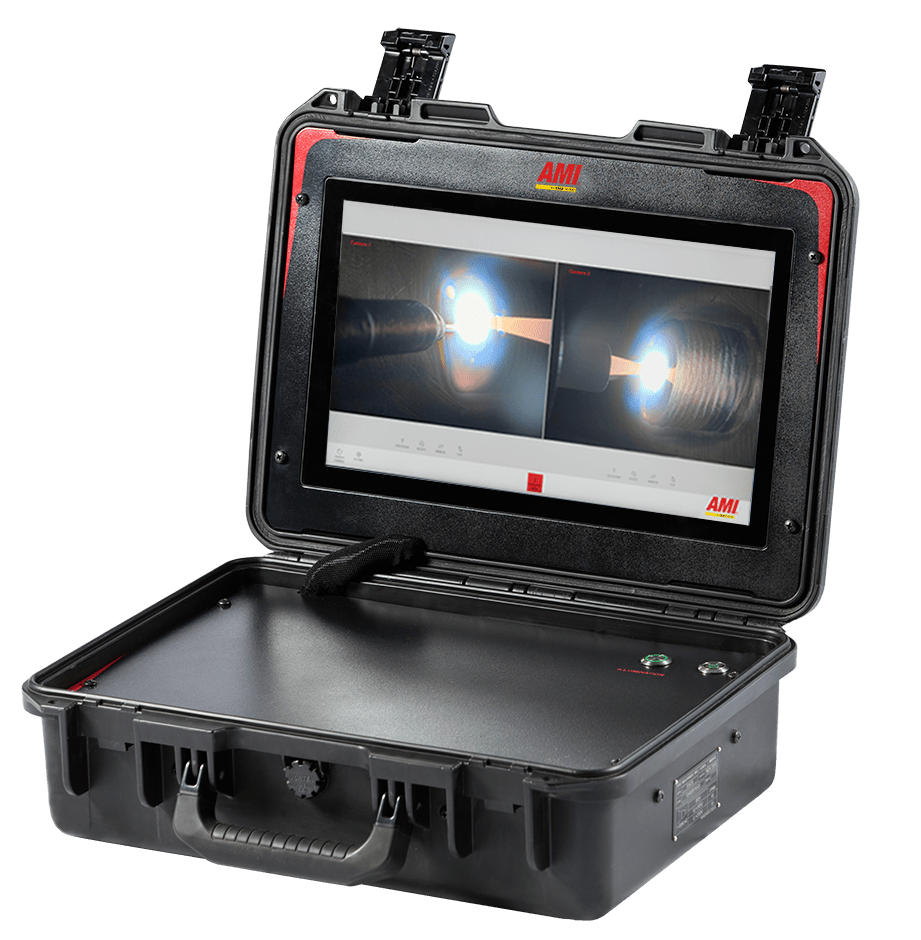
The benefits of using an arc welding monitoring system fall into three categories: ensuring weld quality, providing a record of compliance, and enhancing operator safety. The benefits afforded in each of these areas can also positively impact overall operational efficiency and production costs.
1. Ensure Weld Quality
Determine the Correct Parameters for the Welding Schedule
Even though mechanized orbital welding systems have simplified the setup for many welding procedures, determining the exact schedule for a specific type of welding procedure (based on materials, pipe diameter, application, and location) may involve several iterations of adjusting or fine-tuning the parameters to achieve the desired result.
During a test weld, a vision system allows the operator to monitor the welding process and identify parameters that may need adjusting, such as arc gap, electrode alignment, shielding gas flow, and filler wire speed. In contrast to using an eye shield, a camera makes it far easier and quicker to identify any parameters that require adjustment.
Identify Defects As Soon As They Occur
Even when an orbital welding schedule has been carefully honed for a particular project, there’s the possibility that a different operator or a change in the environment could affect weld quality. Electrode contamination, improper material preparation, and changes in gas flow can all make a difference in the final weld. The ability to monitor an orbital welding process allows an operator to immediately identify the problem, stop the welding process, and take corrective action. In some cases, corrective actions can be made “on-the-fly,” allowing the trained operator to continue the weld to completion.
An arc weld vision system helps to identify issues such as:
- Porosity: This may be caused by the torch angle, a disturbance in shielding gas, moisture, mill scale, or rust.
- Incomplete sidewall fusion: This occurs when the base materials do not reach melting temperature and is the result of an incorrect welding angle, oxides, or foreign material on the surface of the workpiece.
- Weld skip: Irregularities in the weld surface may cause the torch to temporarily become stuck. When the torch is freed, it skips over a seam segment, leaving an unwelded gap.
- Metal discoloration: This is generally the result of excessive heat or a change in gas coverage.
- Incorrect Wire Entry: Due to cast and helix in spooled wire, the filler wire can move within the weld puddle. A vision system with a leading view of the arc allows the operator to view any change in wire position and take corrective action if needed before the wire misses the weld puddle and creates a void.
A minute of immediate corrective action can save hours of post-welding remediation to correct the problem.
2. Provide a Record of Compliance
An arc welding monitoring system can be an essential tool in meeting the compliance requirements of highly regulated industries like nuclear, pharmaceutical, and food processing. The ability to digitally record an entire welding procedure can provide irrefutable evidence that a welding procedure has been completed properly. Data acquisition systems take this a step further by collecting data from the weld controller and recording welding parameters as well as taking video of the weld as it is performed.
3. Enhance Operator Safety
Monitoring systems can provide an added layer of safety against inherent welding dangers. The combination of remote video monitoring and welding adjustment via remote pendant allows welders to control and monitor welding procedures in environments with limited ventilation that would expose them to toxic fumes or shielding gases, or in nuclear plants where radiation presents a health risk. Monitoring a welding process via camera and video also eliminates the risk of welding eye while providing a clearer, more magnified image of the activity than would be possible using just eye shields.
Video Monitoring Improves Quality, Compliance, Safety, and Efficiency
Arc welding monitoring systems enhance nearly every aspect of a shop’s orbital welding activities by ensuring weld quality, helping the operator set the parameters for a new welding schedule, identifying and correcting defects to reduce scrap, providing evidence of proper welding procedure, and enhancing operator safety in hazardous environments. Each of these benefits leads to improved efficiency and lower production costs, providing compelling reasons to invest in a system.
Arc Machines, Inc. offers highly configurable monitoring and recording systems with many different camera options to meet the needs of diverse orbital welding applications. Active light filtering and electronic shutter speed capabilities automatically compensate for differences in light intensity during welding and non-welding modes to provide a high-resolution image of arc welding activity. Systems can be integrated with most AMI weld heads or available as turn-key solutions.
Arc Machines offers a wide range of products, accessories, and services—including welding vision systems and data acquisition systems—designed to enhance welding quality and efficiency. For inquiries regarding products, contact sales@arcmachines.com. For service inquiries, contact service@arcmachines.com. Arc Machines welcomes the opportunity to discuss your specific needs. Contact us to arrange a meeting.


